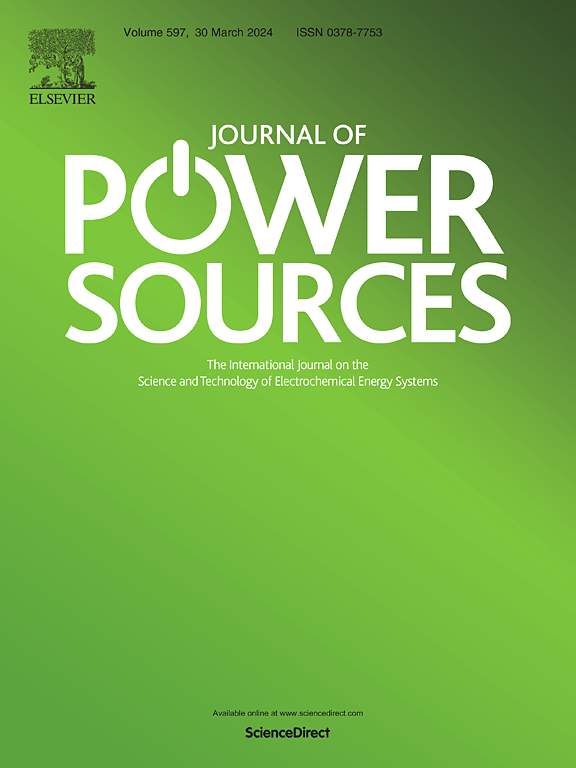绿色缓蚀剂聚乙烯醇在铝空气电池中的缓蚀机理研究
IF 8.1
2区 工程技术
Q1 CHEMISTRY, PHYSICAL
引用次数: 0
摘要
铝空气电池具有能量密度高、重量轻、无污染等优点,是一种很有前途的绿色能源。然而,阳极的析氢反应(HER)对其进一步发展提出了挑战。本研究通过实验、分子动力学(MD)模拟和密度泛函理论(DFT)研究了聚乙烯醇(PVA)作为缓蚀剂对电池缓蚀性能和电池性能的影响。结果表明,当PVA1099添加量为1%时,抑制效率提高60.44%。同时,电池性能显著提升。添加1%的PVA1099后,AAB电池的容量密度为1600.0 mAh g−1,是4 M NaOH的2.3倍。MD和DFT模拟结果表明,PVA分子能够吸附Al表面,在Al阳极表面形成膜;同时吸附H2O分子,产生更强的氢键效应。本研究揭示了PVA分子抑制ABBs的机制,提示具有长-OH链的PVA是ABBs的有效抑制剂。本文章由计算机程序翻译,如有差异,请以英文原文为准。

On mechanism of corrosion inhibition of green inhibitor polyvinyl alcohol in aluminum-air batteries
Aluminum-air batteries (AABs) are considered as a promising green energy source owing to high energy density, light weight, and non-pollution. However, hydrogen evolution reaction (HER) of the anode presents a challenge to their further developments. In this study, the influence of polyvinyl alcohol (PVA) as an inhibitor on the inhibition and battery performance is investigated by experiments, molecular dynamics (MD) simulations, and density functional theory (DFT). It is demonstrated that, with addition of 1 % PVA1099, the inhibition efficiency increased by 60.44 %. Meanwhile, the battery performance is significantly enhanced. The addition of 1 % PVA1099 results in a capacity density of 1600.0 mAh g−1 for the AAB cell, which is 2.3 times that of the 4 M NaOH. The results of the MD and DFT simulations indicate that PVA molecules are capable of adsorbing Al surface, forming a film on the surface of Al anode; simultaneously adsorbing H2O molecules, giving rise to a stronger H-bond effect. This work sheds light on the mechanism underlying inhibition performance of PVA molecules, suggesting that PVA with long -OH chains is an effective inhibitor in ABBs.
求助全文
通过发布文献求助,成功后即可免费获取论文全文。
去求助
来源期刊

Journal of Power Sources
工程技术-电化学
CiteScore
16.40
自引率
6.50%
发文量
1249
审稿时长
36 days
期刊介绍:
The Journal of Power Sources is a publication catering to researchers and technologists interested in various aspects of the science, technology, and applications of electrochemical power sources. It covers original research and reviews on primary and secondary batteries, fuel cells, supercapacitors, and photo-electrochemical cells.
Topics considered include the research, development and applications of nanomaterials and novel componentry for these devices. Examples of applications of these electrochemical power sources include:
• Portable electronics
• Electric and Hybrid Electric Vehicles
• Uninterruptible Power Supply (UPS) systems
• Storage of renewable energy
• Satellites and deep space probes
• Boats and ships, drones and aircrafts
• Wearable energy storage systems
 求助内容:
求助内容: 应助结果提醒方式:
应助结果提醒方式:


